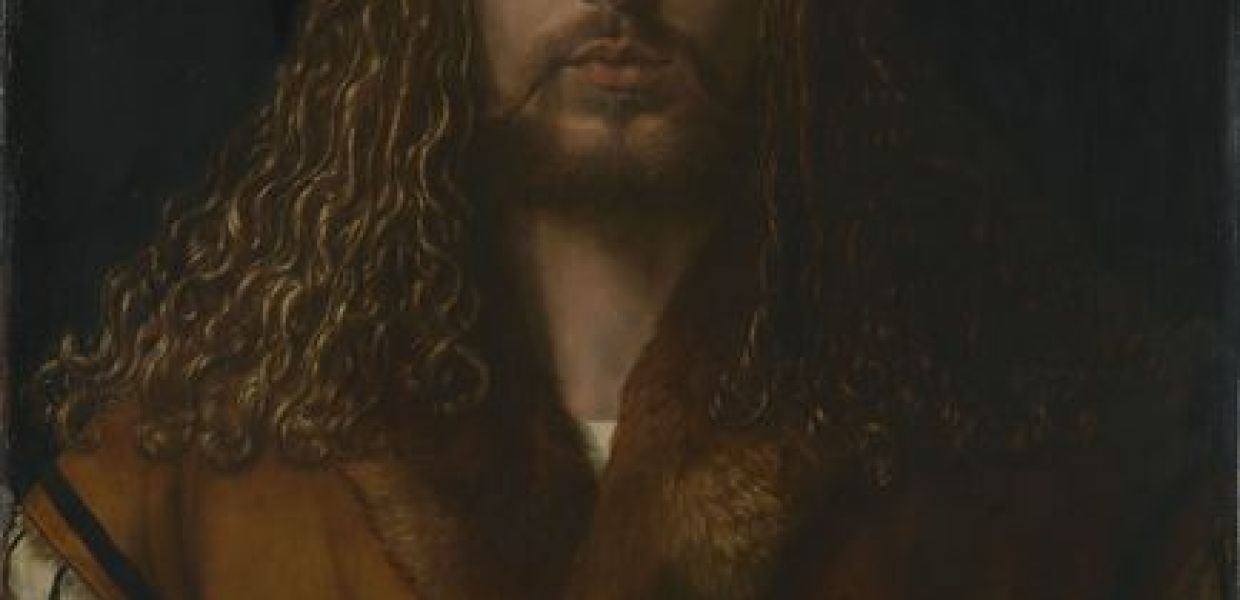Choosing a country's artworks for Europeana 280: Germany

With Europeana 280 in full swing across Europe, we continue this weekly blog series, finding out some of the stories behind the selections. This week Europeana 280’s Exhibition Coordinator Ann Maher highlights nominations from Germany.
Germany has played a crucial role in the development of European art history. The influence of its artists, movements and schools, ranging from masters of the Renaissance to the Vienna and Munich Secessionists and Expressionists of the 20th century, can be seen in Europeana 280 selections from many other countries. Nominations come from collections throughout Germany.
Renaissance masterpieces
Gemäldegalerie Alte Meister (Gallery of Old Masters), part of the Dresden State Art Collections, nominated one of their most famous works, as Dr Andreas Henning, Curator of Italian Painting, explained: “Raffael's Sistine Madonna (1512/1513) is one of the best known Renaissance paintings in the world. We chose this image for the Europeana campaign to share it with an international audience and to welcome people to visit it in Dresden.”
The two cherubs at the bottom of the painting have also enjoyed solo careers since the beginning of the 19th century. In the exhibition at the museum dedicated to the 500th anniversary of the painting, their versatility as marketing vehicles was on show in products ranging from embroidery and greeting cards to a German baking mix called 'Erotik Brot'.

Self-Portrait with Fur-Trimmed Robe (1500), Albrecht Dürer, Alte Pinakothek, Munich, public domain. With this painting Dürer, then 28 years old, created one of the most unusual works in portraiture history.
One of the most unusual self-portraits in all of art is from Northern Renaissance artist Albrecht Dürer. According to the Alte Pinakothek, Munich, about their selection: Self-Portrait with Fur-trimmed Robe (1500), Dürer’s gaze and his hand, representing an artist's tool, are emphasized, while the frontality and strong idealization are reminiscent of representations of Christ, aspects which are inseparable from Dürer's early studies of human proportion. The artist’s self-awareness is revealed in its inscription: “Thus I, Albrecht Dürer from Nuremberg, portrayed myself with characteristic colors in my 28th year." Dürer was one of the first great sightseers of European art and already famous in his twenties. Many of his vast body of works reflecting his consummate skills as a painter, printmaker and theorist can be seen on Europeana, from collections across Europe.
Germany’s Picasso is a woman
“When we were asked by the State of Bremen, whether we would like to nominate Paula Modersohn-Becker for the Europeana 280 project, we were immediately enthusiastic”, said Verena Borgmann, Curator Museen Böttcherstraße, Bremen. The painter, who worked both in Worpswede and in Paris, plays a prominent role in European Modernism. “By 1900, there was no other German artist who was as radically modern as Paula Modersohn-Becker,” continued Borgmann. “Inspired by French Modernism and searching for simplicity of form, she developed a specific and distinctive visual language that leaves the aesthetic and thematic canon of the 19th century far behind.” Paula Modersohn-Becker’s Self-Portrait on the 6th Wedding Day (1906) also plays an iconic role in art history – it’s the first nude self-portrait by a woman in the world. When exhibitions of her work were shown in Bremen in 2007/8, German newspaper Frankfurter Allgemeine Zeitung (FAZ) proclaimed: ‘Germany’s Picasso is a woman’.
Lady Dada
Hannah Höch was the only woman involved with the Berlin Dada movement and in 1919 she began to use the technique of photomontage. Dada-Rundschau (1919), according to the Berlinische Galerie - Landesmuseum für moderne Kunst, Fotografie und Architektur, is a political kaleidoscope: “In this complex cross-section through the era following the First World War, it is possible to recognise individuals such as the German President Friedrich Ebert wearing bathing trunks and, above him, the American President Woodrow Wilson dressed as an angel of peace”, the museum said about their selection. Höch referred to her work as a parody of the ‘gigantic global nonsense’. As an artist, she examined representations of female identity in the complex postwar period, but also worked for a publisher of craft and fashion magazines. She was a close friend of dadaist Kurt Schwitters, a Europeana 280 nomination from Sprengel Museum Hannover.
Klaus Killisch studied at the Art Academy in East-Berlin from 1981-1986 and dkw. Kunstmuseum Dieselkraftwerk Cottbus said about their nomination: “Klaus Killisch is like no other painter of the young in the 1980s generation of artists in the GDR”. Killisch’s work has been represented in many exhibitions of German art including the Venice Biennale. He is also a musician. The selection Tango bis es weh tut (1988) derives its title from the Tom Waits song Tango Till They're Sore.
We hope you're enjoying the diverse art selected for the Europeana 280 campaign. Join the conversation on Twitter via #Europeana280.
